Notes on Node.js
Node.js is a server-side framework, used to create intensive web applications (steamming, video, VoiP…), and is build on the Google’s Chrome Javascript V8 engine. Node.js runs over a runtime environment.
The lead web reference for Node.js is: https://nodejs.org
There are also available reference guides: :link:
Important features are:
- Designed for server applications
- Asincrhonous and event-driven.
- Non blocking.
- Single threaded, but easily scalable.
- No buffering- Node.js doesn’t buffer any data.
- Ligthweight and efficient.
Node.js is best used in the following applications:
- I/O applications
- Data streamming applications
- Data Intensive Real-Time applications (DIRT)
- JSON API based applications.
- Single page applications.
Node.js is best not used in:
- CPU intensive applications.
Installation
Its reference website is: https://nodejs.org/
From there you can download the last package- recomended the LTS(Long Term Support) release.
In MS Windows, you just have to downloade the: nod-vx.xx.x-x64.msi run it, and follow the instructions.
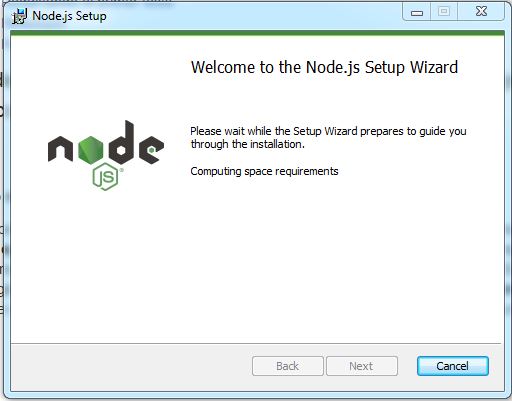
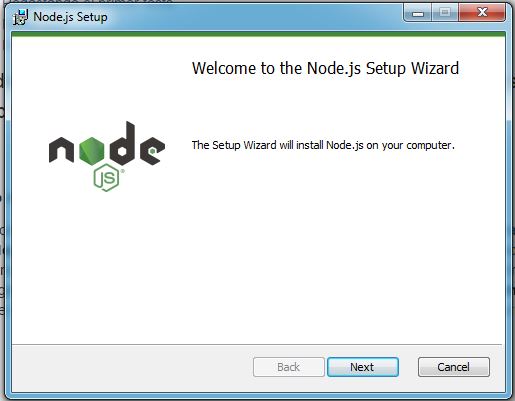
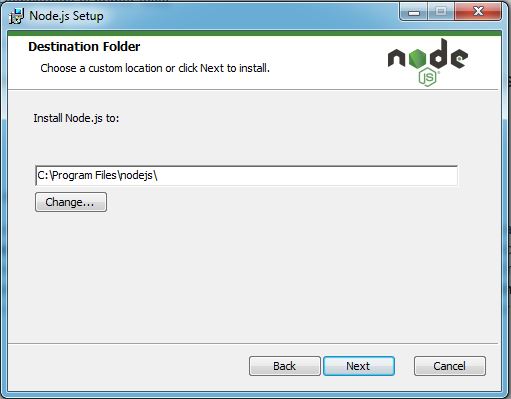
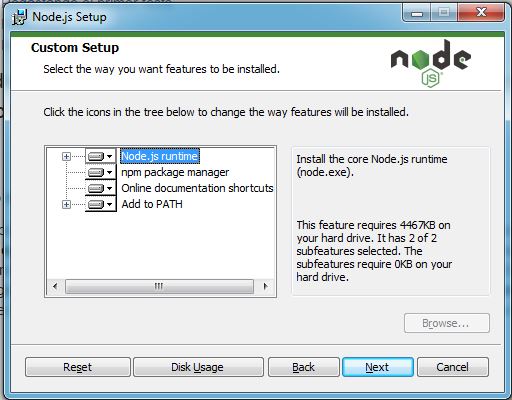
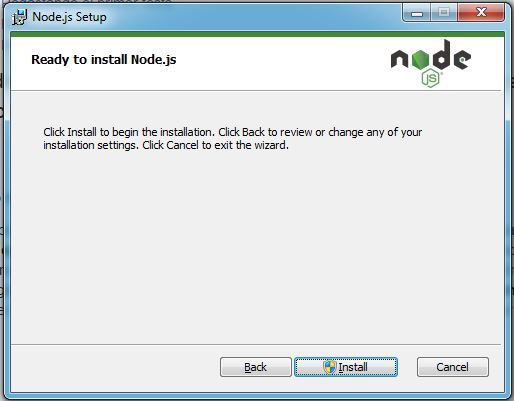
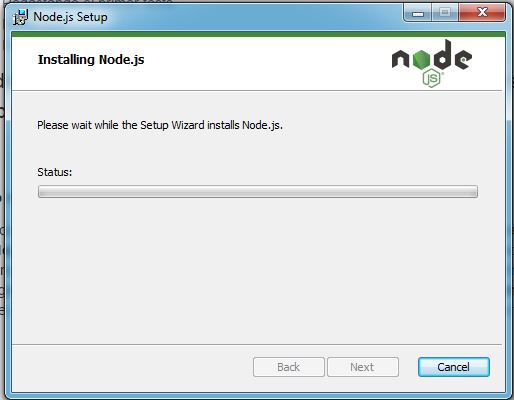
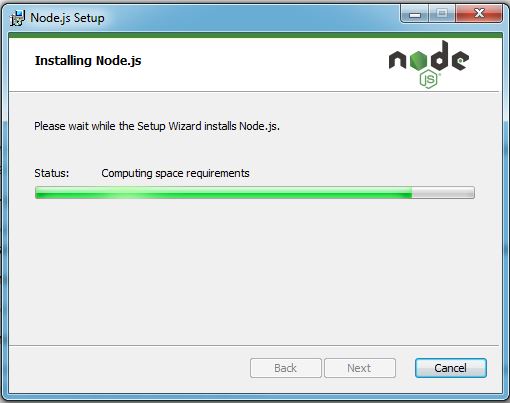
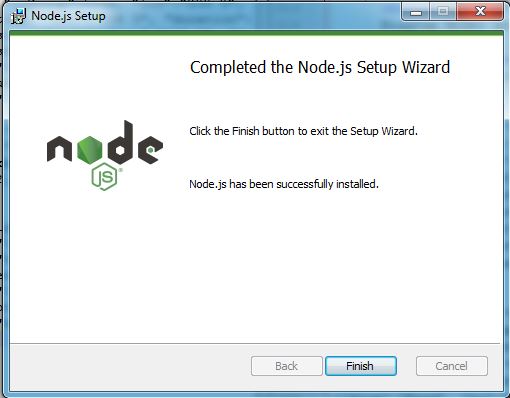
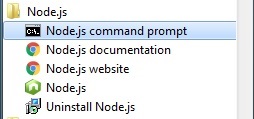
In Linux, you have:
- Check you have the building tools: ‘apt-get install build-essential’
- Get the source code, for example from its web:
cd /temp
wget http://nodejs.org/dist/vx.xx.x/node-vx.xx.x-linux-x64.tar.gz
tar xvfz node-vx.xx.x-linux-64.tar.gz
mkdir -p /usr/local/nodejs
mv node-vx.xx.x-linux-x64/ /usr/local/nodejs
and set the enviromental variable:
export PATH=$PATH:/usr/local/nodejs/bin
- Compile it:
- './configure'
- 'make'
- 'make install'
Starting:
Parts of a node.js applications
- import required modules – We need to import the
httpmodule. - create a server – a server objecto, that listen to client’s requests (like a brownser).
- read request and respond - return response according to request.
Import required modules:
To use a http server and client you need to define it with ‘require('http’)’ The code-word ‘require’ is used to load module (sort of libraries).
var http=require('http');
although it can be:
const http=require('http');
actually the last option, is the best one.
there is another very used module called Express, you can load it wit:
var express=require('express');
or for example of an IoT application you may want to use:
var http=require('mqtt');
Creating a server
Getting requests
To create a server, you use the method createServer()
var http=require('http');
var server=http.createServer(function(request,response)
{
//data process goes here.
});
If you want to implement as an event listener, you can do it like:
var server=http.createServer();
server.on('request',function(request,respon){
//data process goes here.
});
If we want to implement a server that always replies with an OK status code, then we would write it as:
http.createServer(function(requested, response) {
//Send the HTTP header
//HTTP Status: everything is ok: 200 OK
//Content Type: text/plain
//send the response body as "Hello World!"
//listen(8081) means it listening to the 8081 port.; the default port for servers is 80, 8000 or 8080, but you can use whatever you want.
response.end('Hello World!\n');
}.listen(8081);
//print log message in the console.
console.log('Server running at http://127.0.01:8081/');
//or an alert
alert('Server running at http://127.0.01:8081/');
When a request arrives to the server then it outputs the programmed response.
For processing the request you will need to process the method and the url. Also you may need the headers and user-agent:
var method = request.method;
var url = request.url;
var headers= request.headers;
var userAgent = headers['user-agent'];
If some headers are repeated, then their values are overwritten or joined together as comma-separated strings, depending on the header. In that case you can use rawHeaders.
When receiving a ‘POST’ OR ‘GET’ request, needs a bit more of precission. The ‘request’ object implements the RedableSteam, this stream can be listened or piped. So you can parse the stream data listening to the stream data and end events. So the best action is to collect all the ‘data’ into an array, and at the ‘end’ event to stringfy it.
var body = [];
request.on('data', function(chunk) {
body.push(chunk);
}).on('end', function() {
body = Buffer.concat(body).toString();
// at this point, `body` has the entire request body stored in it as a string
});
Have in mind, that the request is an ReadableStream and is also an EventEmitter, and it emits an ‘error’, and in case you don’t listen for it, that can cause the program to crash. So its recommended to handle that ‘error’ even in the case, you don’t do anything, and just log it, and move on.
request.on('error', function(err) {
// This prints the error message and stack trace to `stderr`.
console.error(err.stack);
});
Answering requests
The response is an instance of ServerResponsethat is an WritableStream. The default response code will be always 200 (OK), unless you modify it, for it you use the statusCode property.
response.statusCode = 404; // resorce wasn't found
Headers, are set with the SetHeader:
response.setHeader('Content-Type', 'application/json');
With the statusCode and SetHeader you set ‘implicit headers’, and you rely on Node.js to send the headers at the proper time. You can also ‘explicity’ set those headers writing them into the response stream with the method writeHead:
response.writeHead(200, {
'Content-Type': 'application/json',
'X-Powered-By': 'bacon'
});
For the body of the response, you can use normal write methods for a stream:
response.write('<html>');
response.write('<body>');
response.write('<h1>Hello, World!</h1>');
response.write('</body>');
response.write('</html>');
response.end();
or write it all at once, like:
response.end('<html><body><h1>Hello, World!</h1></body></html>');
Watch out! because as it happened with the request, the response is an eventEmitter, an it also launch an error so you should handle it.
Summing it up
If we put all the above together:
var http = require('http');
http.createServer(function(request, response) {
var headers = request.headers;
var method = request.method;
var url = request.url;
response.statusCode = 200; //ok
var body = [];
request.on('error', function(err) {
console.error(err);
response.statusCode = 400; //Bad request
response.end();
}).on('data', function(chunk) {
body.push(chunk);
}).on('end', function() {
body = Buffer.concat(body).toString();
// At this point, we have the headers, method, url and body, and can now
// do whatever we need to in order to respond to this request.
response.on('error', function(err) {
console.error(err); //to stderror
response.statusCode = 404; //error on request.
});
//response.statusCode = 200; //ok
response.setHeader('Content-Type', 'application/json');
// you can write it, all at once with:
// response.writeHead(200, {'Content-Type': 'application/json'})
var responseBody = {
headers: headers,
method: method,
url: url,
body: body
};
response.write(JSON.stringify(responseBody));
response.end();
// you can write it, all at once with:
// response.end(JSON.stringify(responseBody))
});
}).listen(8080);
For reference, note that request is a ReadableStream and response is a WritableStream, so you can get advantage of pipes if you need them.
Run node as background daemon
it is possible with:
nohup node myserver.js > /dev/null 2>1 &
nohup: doesn’t allow termination of the process even in the event the stty is finished (the console/shell) /dev/null : the output of the process goes to the null-device (shinkhole). 2>&1 : stderr is redirected to stdout – in this case stdout already is redirected to /dev/null – & : run the process in the background (as a daemon)
videos tutorials playlist from freecode camp: https://www.youtube.com/playlist?list=PLWKjhJtqVAbmGQoa3vFjeRbRADAOC9drk